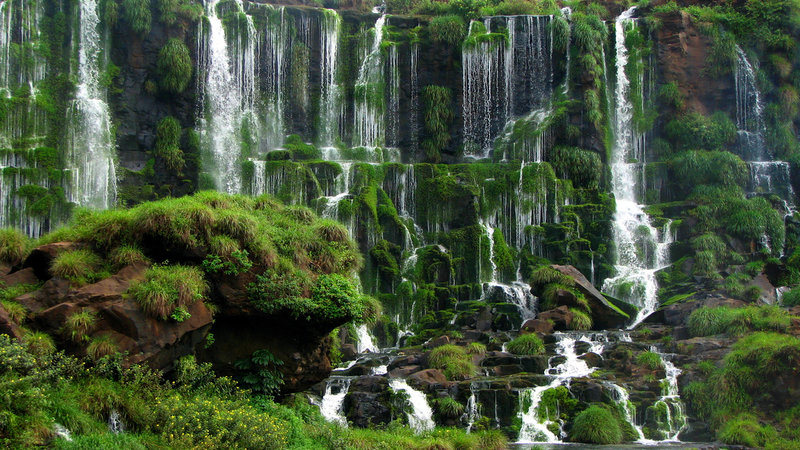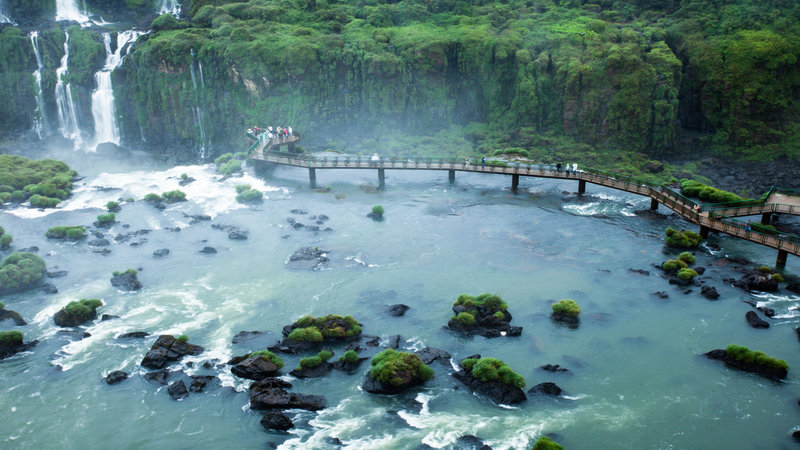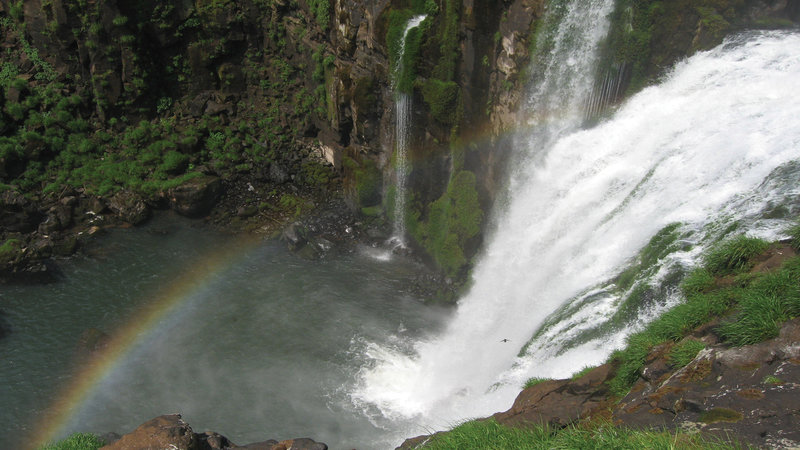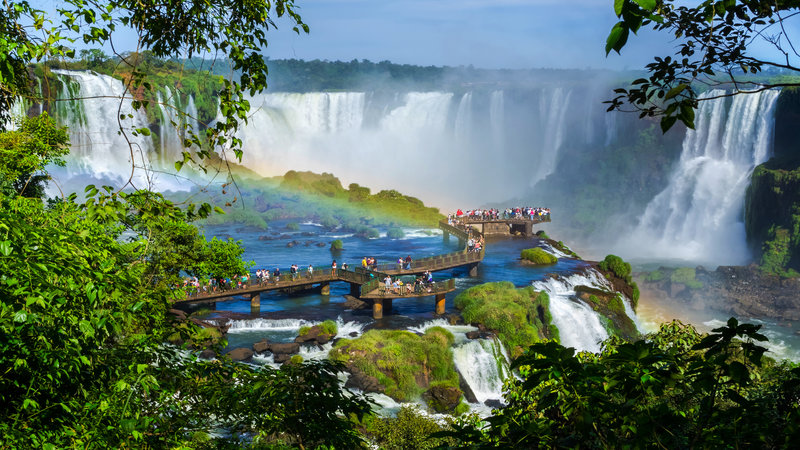It’s no secret we all love a good waterfall. From the frosty rapids of Iceland to the aqua torrents of Croatia, there’s just something about huge volumes of water plummeting to the ground that makes us gape in wonder.
There are an endless stream of waterfalls triggering severe wanderlust across the globe, (if you ask us, these are the most beautiful) but your bucket list wouldn’t be complete without a visit to South America’s Iguazu Falls.
A magnificent display of over 250 cascading drops, The Iguazu Falls has certainly earned its stripes as one of the New Natural Seven Wonders of the World. Spanning almost 3km across the borders of Argentina and Brazil, the Cataratas del Iguazú (in Spanish) or Foz do Iguacu (in Portuguese) make a splash as the largest waterfall system on the planet. Step aside, Niagara.

There are over 250 individual cascades in the Iguazu Falls
Naturally, a spectacle of this size comes with many a viewpoint and The Iguazu Falls can be taken in by air, land or sea. It can also be observed and explored from the two different countries it calls home. But which is better? We’ve floated the best features of each below, to save you drowning in indecision.
The Argentinian Side
Argentina’s Cataratas del Iguazú offers a multi-faceted and truly visceral experience. With bragging rights over almost two-thirds of the falls, it’s easy to spend a full day or two exploring all it has to offer.
Whether you want to go wildlife-spotting in the Iguazu National Park or take the Tren de la Selva to the top of the falls, there are plenty of ways to get up close and personal with the UNESCO-listed site.
Best features
1. The opportunity to walk on water, sort of. A network of boardwalks allow you to wander along the Devil’s Throat, a horseshoe-shaped curtain of waterfalls with 14 magnificent cascades.

A network of boardwalks takes visitors right up to the action
2. The best viewpoint for arguably the most magnificent fall of all, the Garganta del Diablo. A breathtaking walkway takes you right to the mouth of this thunderous torrent. Be sure to pack a waterproof jacket.
3. The option to make a splash. Speedboat rides take you right underneath the falls before cruising down the rapids and finishing with a wildlife safari. Waterproof jackets are provided for this one.
The Brazilian Side
What Foz do Iguacu lacks in size compared to its Argentinian counterpart, it makes up for with fantastic observational opportunities. A glass lift takes you from the top viewing deck to the boardwalk, where you can walk along the edge of the panoramic pours.
The city is also further structurally developed than Puerto Iguazu, with more accommodation options and easy airport accessibility.
Best features
1. Killer photo opportunities. The walkway doesn’t take you as close to the action, which means the water spray is minimal and it’s safe to get the camera out. Being further back also allows you to get more of the falls in the shot.
2. The option to take flight. It’s difficult to fully grasp the enormity of the falls from ground level, but the helicopter rides (only available from the Brazilian side) will render you speechless and make you feel almost as small as these places do.

The magnificent sight can be taken in by land, air and sea.
3. You can see incredible wildlife, largely of the bird variety. Sitting directly across the road from the helicopter pad, the Parques das Aves is an attraction in its own right. Set within the sub-tropical rainforest, it provides shelter for over 150 species of birds – toucans, flamingos and eagles included. It’s also on the way to the Foz de Iguacu
Por que no los dos?
Of course, if you want to soak up all The Iguazu Falls has to offer, or you’re just too indecisive, you can always see both sides on Intrepid’s Iguazu Falls tour. In fact, most of our small groups trips in Argentina and Brazil take in both sides of the falls. Just make sure you do your visa and immigration research for both countries.
The requirements vary for each nationality. For Argentina, typically only a reciprocity fee is charged but for Brazil you’ll likely have to organise a visa well in advance. Unfortunately these don’t come cheap, but they will help you justify a visit to the country’s many other attractions, like the bustling and brilliant Rio de Janeiro, for example. Any excuse, right?
Check out our 2-day Iguazu Falls tour, or our full range of adventures through Brazil and Argentina.

